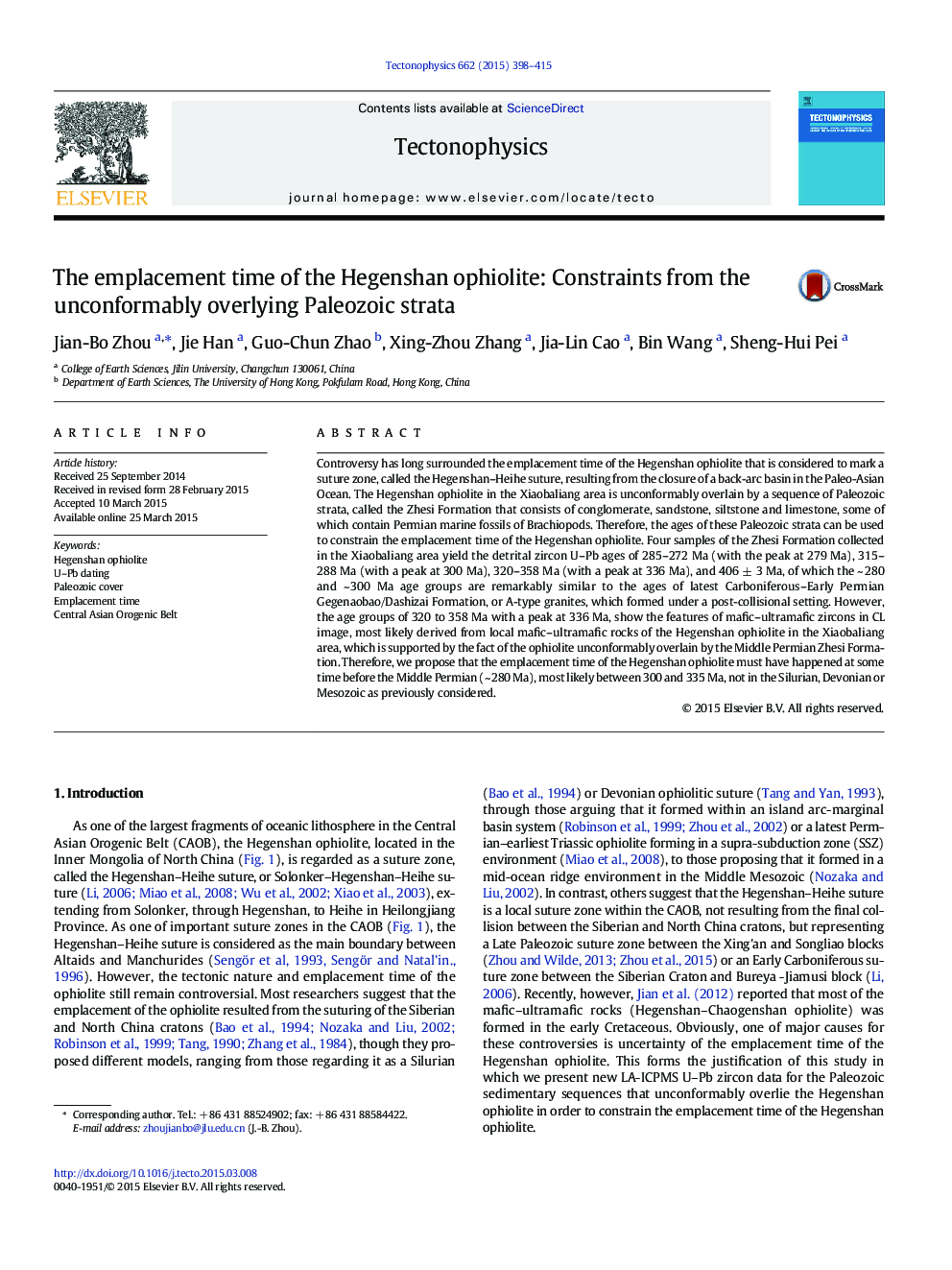| کد مقاله | کد نشریه | سال انتشار | مقاله انگلیسی | نسخه تمام متن |
|---|---|---|---|---|
| 4691478 | 1636733 | 2015 | 18 صفحه PDF | دانلود رایگان |
• Hegenshan ophiolite was unconformably overlain by the Paleozoic strata.
• Detrital zircon U–Pb of the strata show peak ages at 279, 300 and 335 Ma.
• The emplacement of the Hegenshan ophiolite must have happened before ~ 280 Ma, most likely at the time between 335 and 300 Ma.
Controversy has long surrounded the emplacement time of the Hegenshan ophiolite that is considered to mark a suture zone, called the Hegenshan–Heihe suture, resulting from the closure of a back-arc basin in the Paleo-Asian Ocean. The Hegenshan ophiolite in the Xiaobaliang area is unconformably overlain by a sequence of Paleozoic strata, called the Zhesi Formation that consists of conglomerate, sandstone, siltstone and limestone, some of which contain Permian marine fossils of Brachiopods. Therefore, the ages of these Paleozoic strata can be used to constrain the emplacement time of the Hegenshan ophiolite. Four samples of the Zhesi Formation collected in the Xiaobaliang area yield the detrital zircon U–Pb ages of 285–272 Ma (with the peak at 279 Ma), 315–288 Ma (with a peak at 300 Ma), 320–358 Ma (with a peak at 336 Ma), and 406 ± 3 Ma, of which the ~ 280 and ~ 300 Ma age groups are remarkably similar to the ages of latest Carboniferous–Early Permian Gegenaobao/Dashizai Formation, or A-type granites, which formed under a post-collisional setting. However, the age groups of 320 to 358 Ma with a peak at 336 Ma, show the features of mafic–ultramafic zircons in CL image, most likely derived from local mafic–ultramafic rocks of the Hegenshan ophiolite in the Xiaobaliang area, which is supported by the fact of the ophiolite unconformably overlain by the Middle Permian Zhesi Formation. Therefore, we propose that the emplacement time of the Hegenshan ophiolite must have happened at some time before the Middle Permian (~ 280 Ma), most likely between 300 and 335 Ma, not in the Silurian, Devonian or Mesozoic as previously considered.
Figure optionsDownload as PowerPoint slide
Journal: Tectonophysics - Volume 662, 1 November 2015, Pages 398–415
